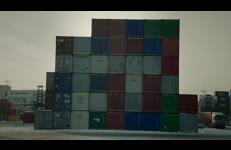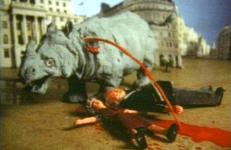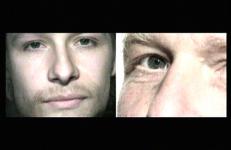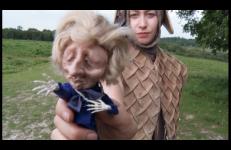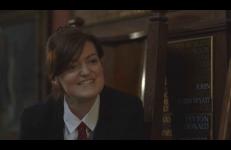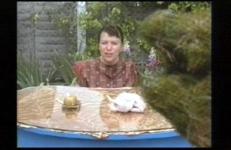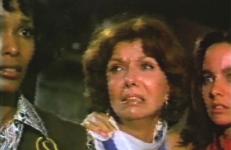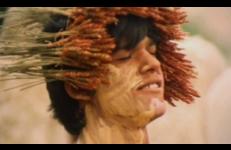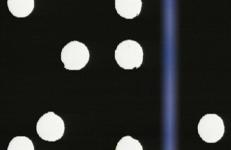Rosa Barba produced a science fiction film based on interviews with local residents and individuals involved in the land suppletion project for Maasvlakte 2. Barba asked the interviewees to imagine what this new land could look like in the future. While we see images of the new land, the slufter: a storage reservoir for heavily contaminated sludge from the new Meuse river, the construction of the huge docksides, basalt blocks, empty containers and the mechanical movements of the transhipment process, we listen to a story apparently taking place in the future.
European Film/Video
An adaptation of the gruesome and fantastical ending chapter of the notorious experimental anti-novel Maldoror, first published in 1868 and written by a young man (who died soon after writing it) who called himself Comte De Lautréamont. A joyful return to the necessity of Super-8 film tricks, this is part of a larger Anglo-German collaborative feature film Maldoror, shot entirely on Super-8 in sections by 15 underground filmmakers working independently. Includes Super 8 Film, model animation, photo animation and live action.
Sportello Quattro, filmed during a residency at the American Academy in Rome, is about immigration, work and community among people of color in contemporary Rome, Italy.
Cast: Joseph Bayorha.
This title is only available on Broad Daylight and Other Times: Selected Works of Kevin Jerome Everson.
Strike Anywhere is a video essay that takes as its point of departure Swedish "Match King" Ivar Kreuger, whose privatization of financial crisis management strategies bears a direct relation to late-20th Century policies implemented by the IMF and WTO. Between 1917 and 1932, Kreuger capitalized on shifts in global financial markets to control over 200 companies and establish matchstick monopolies in at least 34 countries. At the height of his success, Ivar Kreuger was worth approximately 30 million Swedish kronor (the equivalent of 100 billion USD today).
Strike Anywhere is a video essay that takes as its point of departure Swedish "Match King" Ivar Kreuger, whose privatization of financial crisis management strategies bears a direct relation to late-20th Century policies implemented by the IMF and WTO. Between 1917 and 1932, Kreuger capitalized on shifts in global financial markets to control over 200 companies and establish matchstick monopolies in at least 34 countries. At the height of his success, Ivar Kreuger was worth approximately 30 million Swedish kronor (the equivalent of 100 billion USD today).
As the camera looks out through a barred window and the clock strikes four in a Swiss city, the death of Yasser Arafat provides the starting point for a journey back in time.
Throwing Stones is the third episode in the Hotel Diaries series, a collection of video recordings made in the world’s hotel rooms, which relate personal experiences and reflections to contemporary conflicts in the Middle East.
Back in the days of hippy bliss, Ulrike and her husband used to believe that the world would be revolutionized by their activities, consisting mainly of smoking pot and having sex. Thanks to a large family fortune, none of them has ever had to work for a living. But the ‘three generation millions’ – one generation makes it, the second maintains it and the third generation blows it – are slowly disappearing. So now the burden of maintaining the tower falls on the children, of whom Sirius (the Latin form of Osiris) actually seems to enjoy making money.
This portrait is not simply an account of Simone Weil’s life, but rather the skein of her ideas. The “unoccupied zone” is therefore only marginally meant to refer to the southern part of France under Vichy. It is more importantly an existential labyrinth imaged by the film itself; a psychic space through which Weil passed while in exile in her own country.
A kind of warped Folktale, the video follows two women through a bizarre, broken landscape of collapsing signs and imploding meanings, on a pilgrimage to the Winter Gardens, Blackpool, to cure their green baby. In this fantastic, primitive-future world, the difference between technology and magic has become incomprehensible. Our characters become entangled in a cargo-cult of Margaret Thatcher, and buy a Maggie doll which spouts quotations to guide them when they pull its string.
A personal interpretation of the poetry and letters of T.S. Eliot that explores the ambiguities of language and space in a scenario built around an anagram. "A brilliant, absurd staging of Eliot’s The Waste Land in the local pub by the master of irony himself, John Smith. Smith’s use of the subjective camera tradition of independent film takes the viewer on a shaky journey from bar to bog and back again."
—UK/Canadian Video Exchange (touring program, 2000)
Five improvisers are asked to ‘channel’ the psyche of Tony Blair. George Barber asks questions, and also feeds the improvisers anecdotes from various sources about Tony Blair’s life and experience as the Prime Minister of the United Kingdom. The work’s unifying themes are: Tony Blair landing in the Iraqi desert at night; meeting George Bush, and the regrets of his key decisions.
"Wedding takes its name from the predominantly Turkish neighborhood in Berlin where most of the footage of the film has been recorded. During the course of six months in 2006-2007, I have recorded the wedding ceremonies of Turkish and Kurdish immigrants in Berlin, which culminated in a large video archive. From this archive I have created a three-channel video piece.. But the experiences I have gathered during the course of this project and the archive later led me to include this subject in my current PhD thesis, on cultural performances, and crowd theory."
"A piece about self-consciousness and the fearful noise of wind in the trees. Featuring myself as a woman who is lured into the garden by the cries of foliage, given a dinner she doesn't want by a mysterious organic being, and then turned into something else or maybe not. My first foray into digital editing and special hand crafted frame-by-frame effects."
--Jennet Thomas
Digital video, live action, digital video effects, human pixelation and model animation.
George Barber doffs his cap to the 20th anniversary of Scratch Video with What’s That Sound?, a mesmerizing montage of questions, answers, and the cries and screams of people caught in a disaster movie. The work uses as its starting point, the film Airport '77 where, improbably, a jumbo jet sinks to the bottom of the sea. What follows is a clever amalgamation of absurd linguistics, cries and shouts, highlighting the artist’s permanent fascination with speech, and human reaction to out-of-the-ordinary situations.
The result of a three-year project with inmates from a high security prison in Romania, Wings for Dogs is an essay about language and its capacity to simultaneously communicate and hide issues connected to guilt and responsibility.
X-Mission explores the logic of the refugee camp as one of the oldest extra-territorial zones. Taking the Palestinian refugee camp as a case in point, the video engages with the different discourses — legal, symbolic, urban, historical — that give meaning to this exceptional space.
A piece of movie film has survived the forthcoming Ice Age and is discovered by Venusian scientists--5000 years from now... This work is a correspondence of two information fragments of different origins and times that met by accident. Cinema transforms into a three-dimensional landscape--utilizing data that is based on an archaeological misinterpretation. Zuse Strip is named after Konrad Zuse’s first digital computer. It used discarded 35mm movie film from the German UFA as a medium to read and write 8-bit binary code data with a hole-punch system.




